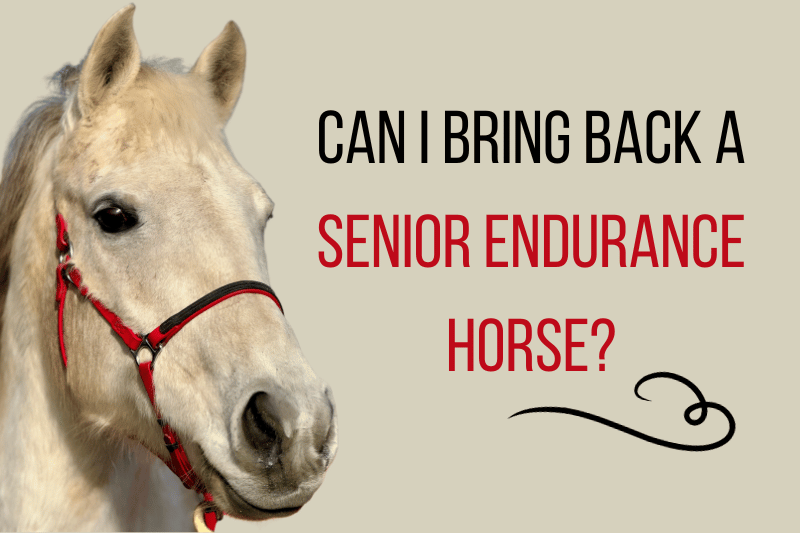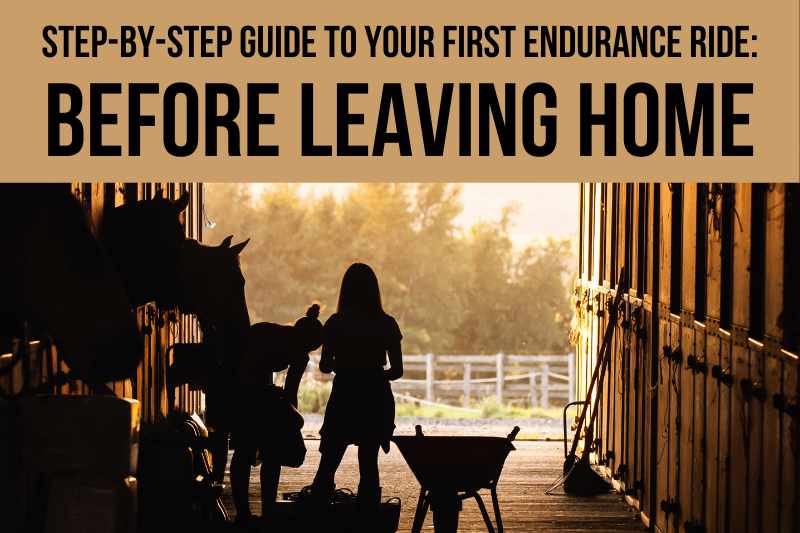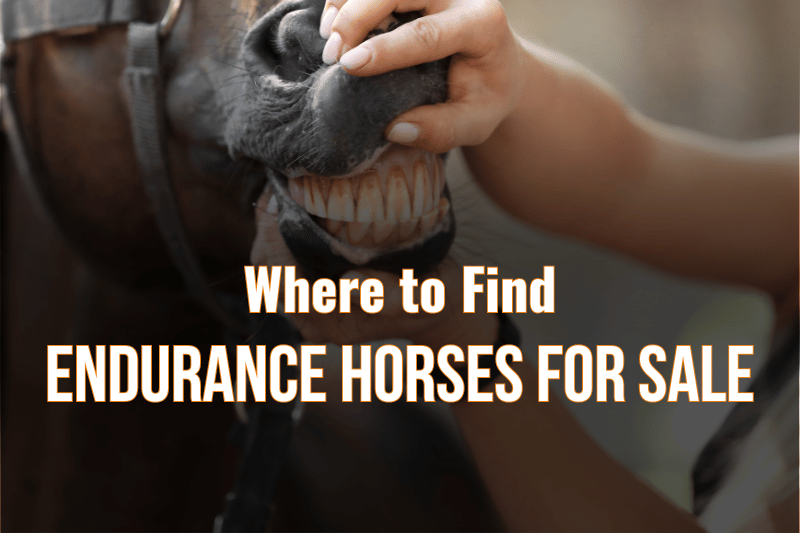Conditioning a horse for equestrian endurance riding is an art and a science, with endless opportunities to learn. Make that horse a senior, and you add a whole new layer of complexity. This season, I’m going to take my first crack at returning an aging former endurance horse to the trail. This post considers strengths, weaknesses, and expert advice for safely riding a senior endurance horse.
My (Hopeful) Senior Endurance Horse
HHR Jammazon, better known as Jammer, was a hotshot back in the day. He top-tenned nearly every ride with ease, was a gentleman for the vet, and never took a lame step. He racked up 1,350 endurance miles in 3 years. We were aiming for Big Horn, then Tevis…
And then, he started headshaking.
He wasn’t the worst case of headshaking syndrome ever seen. Not even close. But he was clearly uncomfortable as weather systems came in — wind and rain were the worst — and I couldn’t in good conscience ask him to essentially run marathons with migraines. (That’s not really what headshaking syndrome is, but you get the gist.) He retired to trail-horse duty in 2016.
However, as headshaking occasionally does, the syndrome seems to be fading with time. Last fall, having seen no symptoms for months, I started riding Jammer regularly again. Despite being utterly deconditioned, he participated with enthusiasm.
This spring, with my other three horses unlikely to do any endurance for various reasons, Jammer is on the docket for a potential return to the sport.
Expert Advice for Riding a Senior Endurance Horse
As I explore this possibility, I’m paying careful heed to Dr. Susan Garlinghouse’s advice as published in the July 2023, August 2023, November 2023, and January 2024 issues of the AERC publication Endurance News. If you’re also trying endurance with a senior equine, I highly recommend reading (and re-reading) her articles.
Here are some major takeaways from Dr. Garlinghouse’s work. I’m considering having them tattooed on my forearm:
- As he ages, my horse will cross the anaerobic threshold at a lower heart rate. I should start using a heart rate monitor and try to maintain a steady effort below 140 bpm. Getting off to walk more will help him recover on the trail and headed into vet checks.*
- As he ages, my horse’s muscles will receive fuel less efficiently and shift more quickly to anaerobic metabolism. I should give him a 30-minute walking warmup, then help keep his effort moderate by keeping a steady pace and tailing up hills.**
- As he ages, my horse has a narrower safety margin for dehydration, and he is less able to dissipate heat. I should take all measures to ensure maximum fluid and forage intake, keep him cool, and spend more time on foot to minimize his effort.***
- As he ages, my horse is at increased risk of muscle issues and poor recoveries due to reduced cortisol response. I should make every effort to minimize his physical and emotional stress wherever possible — from trailer to trail — and supplement with antioxidants including vitamin E and Omega-3 (plus C when under extra stress). For vitamin E, quality really matters. Both Dr. G and my own vet recommend Elevate.****
- As he ages, my horse’s entire digestive tract becomes less efficient. I should maximize his nutrient availability with more frequent dental maintenance, ensure adequate protein and caloric intake (including with Omega-3 fatty acids), and keep a sharp eye for signs of insulin resistance.*****
The articles themselves go in the “why” behind these takeaways. Frankly, it’s sobering how much more vulnerable my senior horse is now, compared to in his youth — and we all know that even horses in their prime can easily get into metabolic trouble!
If nothing else, I’ll be proceeding with an “err on the safe, slow side” mentality. The get-off-and-walk-more recommendation is particularly appealing. I’m in.
Supplement Plan for my Senior Endurance Horse
I figured a reevaluation of Jammer’s feeding and supplement protocol was in order.
I always dread wading into the confusing, marketing-rich and data-poor world of equine supplements. One could spend a lifetime (and a fortune) chasing down all the recommendations and promises!
My goal is to feed only what the horse is likely to actually need, based on the advice of qualified individuals like Dr. Garlinghouse. Here’s what I came up with:
Vitamin E (Elevate Maintenance Powder by Kentucky Performance Products) – This antioxidant is especially important since I don’t have an access to green grass for most of the year.
3:1 Zinc Copper from Mad Barn – Zinc and copper help minimize oxidative damage in hard-working horses. They are especially important for Jammer because my well water is very high in iron, which interferes with the update of these minerals.
MSM from Mad Barn – I’ve added MSM to Jammer’s protocol because it reduces inflammation and oxidative damage. MSM is not AERC legal, so I’ll withdraw it ahead of events.
Marine Omega-3 (EO-3 by Kentucky Equine Research – Although I’ve used freshly-ground flaxseed for the anti-inflammatory benefits of 0-3s in the past, this year I’m trying Dr. G’s recommendation to feed marine oil for its superior bioavailability (not to mention convenience). The oil smells like bubblegum and Jammer doesn’t object.
Adequan – This is one of the better-researched options for joint support. I’ll be working with my vet on the best protocol in Jammer’s case. I’m considering a daily oral hyaluronic acid gel as well.
Magnesium Citrate – All my horses get magnesium, which I’ll continue feeding Jammer. He also gets boron citrate (to improve magnesium uptake) due to his headshaking syndrome.
Finally, I’m feeding him Buckeye Safe n’ Easy Performance pellets along with my usual 80/20 orchard grass / alfalfa mix.
Need something for your horse? You can support The Sweaty Equestrian blog (at no additional cost to you) by using my link to SmartPak. I appreciate it so very much!
Strengths and Weaknesses of My Senior Endurance Horse
Will I be successful in returning Jammer to the endurance trail? I have no idea.
There are some factors working in our favor:
- He truly loves the game.
- He reliably takes care of himself (eating and drinking) during competition.
- He’s sound and has excellent feet.
- He has an old but deep fitness base.
- We’re bonded partners who have been there and done that together.
On the downside:
- He think he’s still a young whippersnapper and wants to go waaaaay too fast in competition.
- He may be feeling some arthritis.
- He’s quite deconditioned.
- He’ll turn 19 this year.
- His headshaking symptoms could return at any time.
So, who knows? With Adequan and lots of long, slow distance and a heart rate monitor and careful nutrition, maybe we’ll enter some rides.
Or maybe, reality will shut us down.
Either way, I’m looking forward to spending more time with my old friend.
References for Further Reading:
*See Susan Garlinghouse, DVM’s July 2023 Endurance News article “Optimizing Equine Longevity” for details about the aging equine heart.
**See Susan Garlinghouse, DVM’s August 2023 Endurance News article “Optimizing Equine Longevity: Muscle Function” for details about the aging equine’s muscles.
***See Susan Garlinghouse, DVM’s September 2023 Endurance News article “Optimizing Longevity of the Aging Endurance Equine: Hydration & Thermoregulation” for details about heat and dehydration risk in the aging equine.
****See Susan Garlinghouse, DVM’s November 2023 Endurance News article “Maximizing Longevity: Immune & Respiratory Systems” for details about hormones and the impact of stressors on all equines.
*****See Susan Garlinghouse, DVM’s January 2024 Endurance News article “Longevity: A Look at the Digestive System” for details about meeting an aging horse‘ changing nutritional needs.
Many thanks to Dr. Garlinghouse for sharing her knowledge with the endurance community!




If the headshaking returns, I would suggest talking to Ashley Stinson about her journey, her mare’s headshaking was horrible and she has tried literally everything and has great suggestions. It was one of the reasons she got into equine bodywork particularly craniosacral which is what she is using now to manage it
https://www.aplusequinebodywork.com/
I’m taking notes — thank you, Sarah!!